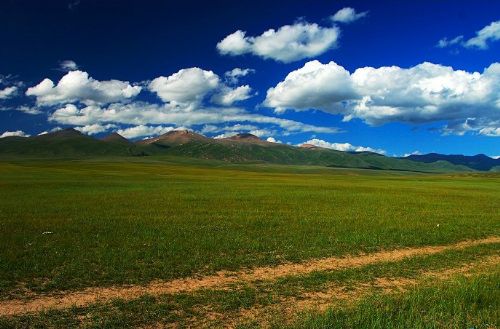Seven thousand people are expected to move from the Bayinbuluke Grassland by 2012 in efforts to save the local ecology, according to the government of Hejing County in Xinjiang Uygur Autonomous Region.
 |
|
File photo: Bayinbuluke Grassland, covering an area of 23,000 square kilometers, is located 2,500 meters above sea level, at the intersection of the southern and northern Tianshan Mountains.
|
According to Da Cairen Jiafu, a member of the Standing Committee of the CPC Hejing County Committee, overgrazing and continuous drought have caused degradation and a sharp decline in the grassland's carrying capacity.
As monitored in 2005, the degraded grassland covered an area of more than 0.3 million hectares, nearly 70 percent of the total pastoral area. Another 20,000 hectares of grassland showed a tendency toward desertification.
Taking the local ecology into consideration, the government of Bayingol Mongolian Autonomous Prefecture initiated a relocation project to protect the environment of the Bayinbuluke Grassland. Among the 14,000 herdsmen living there, about half of them must move by the end of 2010. The policy affects about 1,400 families.
Da, who worked in the Bayinbuluke Grassland for nine years, is familiar with the local situation. He says much attention has been given to poor families during this ecological migration. The local government has built a free apartment of 50 square meters for each family, as well as provided them with 0.47 hectare of land to cultivate fodder.
As part of the project to "return grazing land to grassland", the number of livestock has also been gradually reduced. A further decrease of 100,000 more livestock has been planned for this year.
Through several years' efforts, the ecological environment of Bayinbuluke Grassland has greatly improved. Compared with its conditions before the relocation project, Da says the area of degraded grassland is much less – it has been reduced by more than 66,000 hectares. With a 15 percent increase of vegetation coverage, its grassland yield has risen by more than 50 percent.
Bayinbuluke Grassland, covering an area of 23,000 square kilometers, is located 2,500 meters above sea level, at the intersection of the southern and northern Tianshan Mountains. Home to many swans, it welcomes various rare birds in migration each April. The data from the local department of wildlife conservation indicate that more than 8,000 swans spent the summer there last year, about 2.5 times as many swans as ten years ago.
Around Swan Lake on Bayinbuluke Grassland, a wire fence about 4,000-kilometers long encloses more than 0.33 million hectares of grassland, where no cattle or sheep can be found. It is hence known as a paradise for thousands of swans.